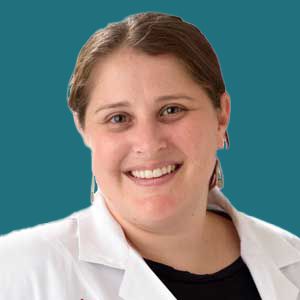Exa-cel and Lovo-cel Provide Important New Options for Patients With Sickle Cell Disease, but Expanding Access is Necessary
Tami John, MD, a clinical associate professor at Stanford Medicine, also discussed ongoing trends in sickle cell disease research.
This is the second part of an interview with Tami John, MD. For the first part, click here.
Tami John, MD

Just over a month ago, the field of hematology witnessed 2 landmark FDA approvals that occurred simultaneously: Vertex Pharmaceuticals' and CRISPR Therapeutics’ autologous gene-edited cell therapy exagamglogene autotemcel (exa-cel, marketed as Casgevy) and bluebird bio’s lovotibeglogene autotemcel (lovo-cel, marketed as Lyfgenia) were both approved for sickle cell disease indications on December 8, 2023. As this took place just one day before the start of the 2023 American Society of Hematology (ASH) Annual Meeting & Exposition, held December 9-12, in San Diego, California, it was a major topic on the minds of many attendees.
At the conference, CGTLive™ sat down with Tami John, MD, a clinical associate professor at Stanford Medicine, to get her perspective on the FDA’s decision. She expressed enthusiasm about the approvals, but emphasized the need to improve access to these new therapies for patients who need them. John also spoke about presentations she was excited to see at ASH’s 2023 conference and ongoing trends in sickle cell disease research.
CGTLive: What are your thoughts on the recent FDA approvals of exa-cel and lovo-cel?
Tami John, MD: We were hoping to hear of those approvals—the UK had a recent announcement for their approval of the exa-cel product so it was wonderful to hear that the FDA was able to approve both products. I think we're gonna be in a fortunate place to have to figure out which patient does better with which therapy; but to have 2 available therapies is really quite exciting. The next step is really going to be: How can we expand this to all the patients that need it? I think it's a wonderful first step to have 2 available products plus [allogeneic] transplant for sickle cell disease as transformative therapies. And now we get to focus on how we can treat patients all across the world in regions that have higher prevalence than in the United States or in the EU and UK.
What else are you excited about at ASH 2023?
There are more and more gene therapy first-in-human studies or early translational studies that are being published or being promoted. It's really exciting now that we have 2 FDA approved products to see that there's some competition in the market—to see some of those newer, innovative correction therapies and other base-editing therapies that are starting to translate into humans. I also really enjoyed the Duffy null conference; I think it was a great educational conference to talk about how Duffy null phenotype is normal in a large population of patients and how we get so many referrals in hematology for what people think is an abnormal neutrophil count, but is really just normal. I think that was a great conference to start to share with our colleagues that we need to promote to others—just to understand that we have differences that are not necessarily ethnic, but they are biologically-driven and we need to start to define those in a way that is normal for biologic differences.
Were there any trends you noticed in sickle cell disease research in 2023?
I think we're seeing a growth in the gene therapies and how they can apply to both sickle cell and thalassemia. I think the conversation about in vivo therapies—how that's applying to hemophilia, how that may be translated to red cell disorders, and also the small molecules and how maybe those can be applied—I think we're very early in those conversations when you're looking at red cell disorders, but hearing the hemophilia story and how maybe that can translate I think actually in the next couple of years could be very exciting.
Is there anything else you would like to share?
I think it's an exciting time especially for sickle cell disease. We have so much focus and so many people interested in treating individuals and I can't wait to see how the field continues to grow, but also how we support individuals in understanding these therapies which can be transformative in the setting where they've identified with a particular disease for so long in their life. It's going to be really exciting to see how people recognize how these therapies can be integrated into their lives.
This transcript has been edited for clarity.